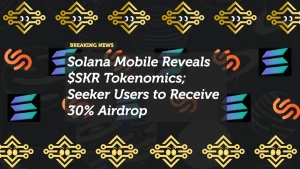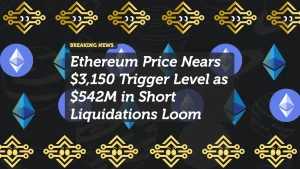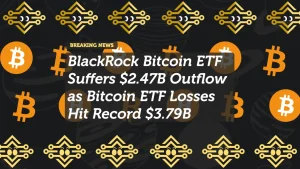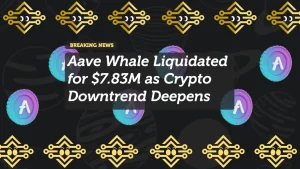
Pi Network Mainnet Launch: Price Volatility, Exchange Listings & Investor Sentiment
After six years of anticipation, Pi Network’s open mainnet is finally live. The long-awaited launch on February 20, 2025, at 8:00 AM UTC marks a major milestone, allowing Pi Coin to be publicly traded on major exchanges like OKX, Gate.io, Bitget, and CoinDCX.
However, the launch hasn’t been without controversy. While some celebrated the event as a new era for mobile-mined cryptocurrencies, others pointed to price volatility, declining investor confidence, and rumors of a pump-and-dump scheme.
In this article, we break down the market reaction, technical indicators, exchange listings, and future implications for Pi Coin.
Pi Network’s Open Mainnet: A Historic Moment
Founded in 2019 by Stanford graduates Nicolas Kokkalis and Chengdiao Fan, Pi Network aimed to democratize cryptocurrency mining by allowing users to mine Pi Coin via their smartphones. The network gained massive traction, amassing over 60 million engaged users.
Before this launch, Pi operated in a closed mainnet phase (since December 2021), where transactions were restricted within its ecosystem. The transition to an open mainnet now allows unrestricted trading, making it a truly decentralized and functional cryptocurrency.
Key Highlights of the Mainnet Launch:
- Date: February 20, 2025
- Time: 8:00 AM UTC (1:30 PM IST)
- KYC Verification: 19 million users verified
- Migrated Users: Over 10 million pioneers moved their tokens to the open mainnet
- Exchange Listings: OKX, Gate.io, Bitget, CoinDCX
This transition represents a critical test for Pi’s real-world adoption, but the early signs indicate a highly volatile market reaction.
Market Volatility & Price Fluctuations
The Pi Coin price has been extremely unstable since launch, with values varying widely across exchanges.
Price Trends (February 20, 2025):
| Time (UTC) | Exchange | Reported Price ($) |
|---|---|---|
| 8:00 AM | OKX | $1.50 |
| 9:30 AM | Bitget | $1.20 |
| 10:45 AM | Gate.io | $5.80 |
| 1:00 PM | Various Reports | $42.62 |
| 4:00 PM | Market Average | $30 – $45 |
These fluctuations reflect strong demand mixed with heavy sell-offs, leading to wild swings in investor sentiment.
Why is Pi’s Price So Volatile?
- IOU Token Crash:
- Before launch, Pi’s IOU (pre-launch futures contract) traded at $200 on some exchanges.
- Post-launch, the IOU dropped by 42%, signaling a market correction as real Pi Coins entered circulation.
- Investor Skepticism:
- Many early adopters are cashing out, leading to selling pressure.
- Fears of a pump-and-dump scheme are growing.
- Exchange Liquidity Issues:
- Price discrepancies indicate liquidity imbalances between different trading platforms.
This chaotic price movement has divided the Pi community, with some calling it the start of a new financial revolution, while others fear it’s another overhyped crypto experiment.
Technical Indicators & Bearish Momentum
Analysts are watching technical indicators closely, and the signals aren’t promising.
1. Relative Strength Index (RSI):
- Pre-launch IOU RSI: 86.2 (Overbought)
- Post-launch RSI: 40.5 – 54.8 (Neutral to Bearish)
- What it means: Declining RSI suggests a loss of bullish momentum, indicating a potential sell-off.
2. Chaikin Money Flow (CMF):
- CMF has turned negative, meaning more money is flowing out than coming in.
- What it means: A declining CMF is a bearish signal, reinforcing concerns about a price collapse.
3. Pump-and-Dump Risks:
- The 85% drop in Pi IOU prices (from $200 to $30) pre-launch suggests that early buyers may have already exited, leaving retail investors holding expensive tokens.
- If trading volume declines, Pi Coin could see further downward pressure.
Possible Price Scenarios:
- Bullish Case: If Pi Coin stabilizes above $50-$60, it could signal strong support and long-term viability.
- Bearish Case: If momentum fades, Pi could drop toward $17-$30, a key support zone.
The Pyramid Scheme Allegations
Despite its popularity, Pi Network has faced persistent pyramid scheme accusations due to its referral-based mining system.
Why Do Some Call Pi a Pyramid Scheme?
- Users earn more Pi by referring others, resembling multi-level marketing (MLM) tactics.
- No clear max supply or transparent tokenomics.
- Years of delays and lack of real-world utility until now.
Why Pi Defenders Disagree:
- Unlike MLM scams, Pi users don’t pay money to mine—just time and engagement.
- The project has backing from major exchanges and has now launched its blockchain.
Still, trust issues persist, and the launch’s volatility hasn’t helped dispel skepticism.
What’s Next for Pi Coin?
The coming weeks will be critical for Pi’s success.
Short-Term Projections:
| Factor | Bullish Case | Bearish Case |
|---|---|---|
| Price Stability | Holds above $50 | Drops below $20 |
| Exchange Support | More listings, higher liquidity | Delistings due to low volume |
| Adoption | Increased real-world use | Speculative trading dominates |
Long-Term Potential:
Some analysts predict Pi reaching $100-$200 by late 2025 if real-world adoption grows. However, others warn of a collapse if it remains a hype-driven token without strong utility.
Key Developments to Watch:
- More Exchange Listings – Will Binance, Coinbase, or Kraken support Pi?
- Use Cases – Can Pi be used beyond speculation?
- Regulatory Scrutiny – Will governments classify Pi as a security or scam?
Final Thoughts
The Pi Network Mainnet launch is a watershed moment, but it’s far from a guaranteed success.
On one hand, millions of users, major exchange listings, and a unique mobile-mining model give it huge potential.
On the other hand, price instability, investor skepticism, and lingering pyramid scheme fears raise serious red flags.
Is Pi the next Bitcoin—or just another crypto hype cycle?
The answer depends on whether it can deliver real utility—not just speculation.
For now, Pi’s future remains uncertain—but undeniably fascinating to watch.
















